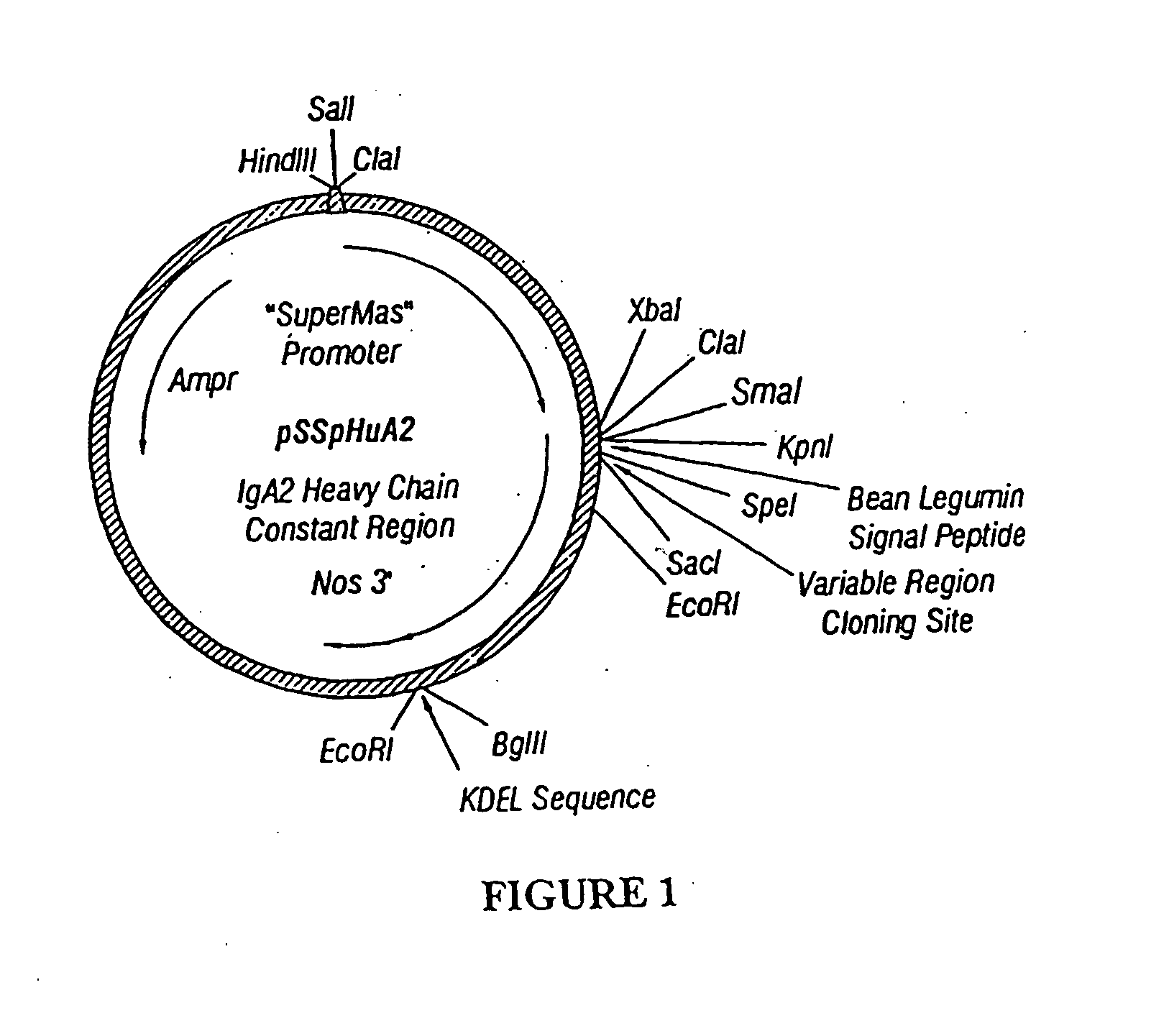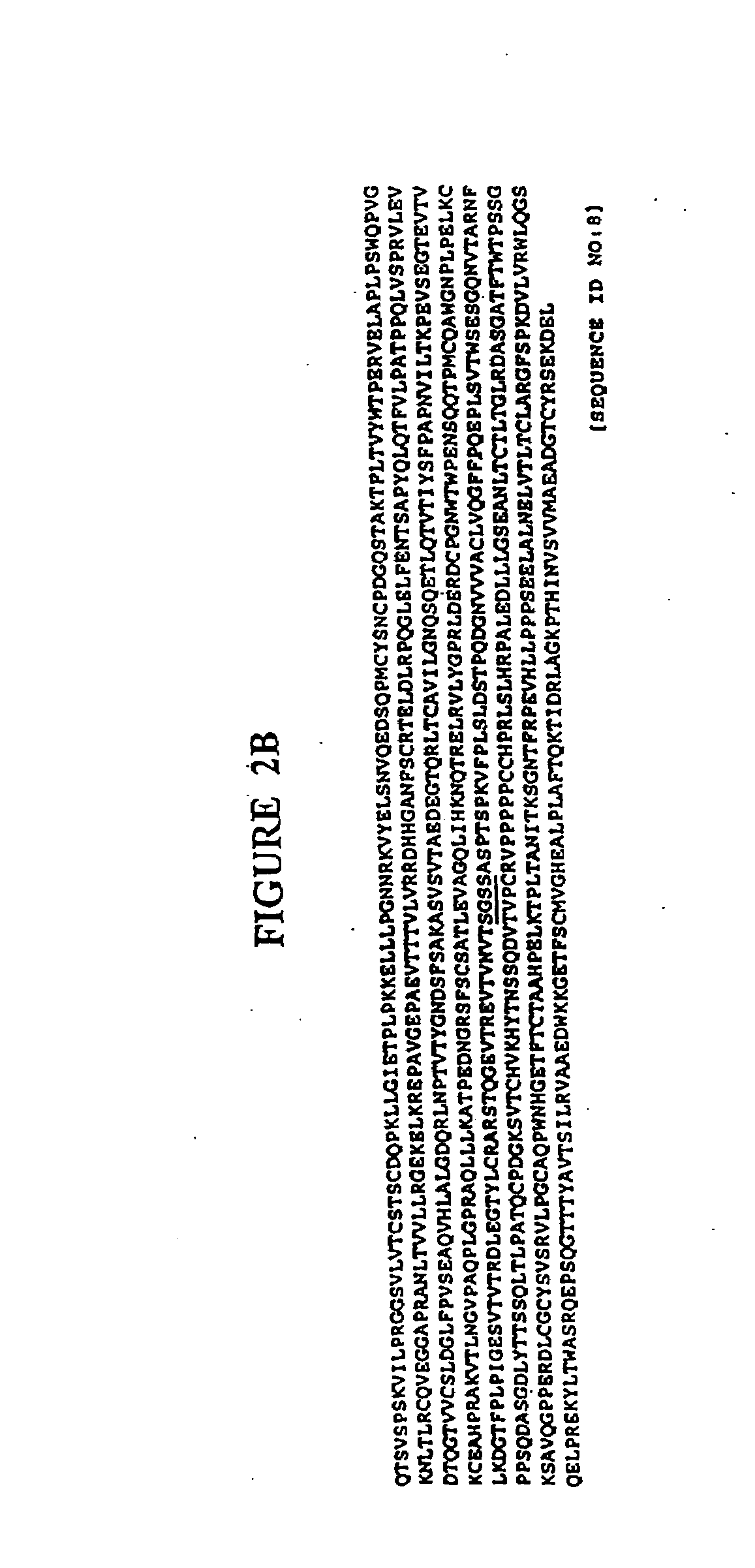Immunoadhesin for the prevention of rhinovirus infection
a technology of immunoadhesin and rhinovirus, which is applied in the field of immunoadhesins, can solve the problems of laborious production techniques, icam-1/immunoglobulin molecules, and billions of dollars in annual costs for society, so as to reduce the initiation or spread of human rhinovirus, reduce the infectivity, and reduce the infection. the effect of infection
- Summary
- Abstract
- Description
- Claims
- Application Information
AI Technical Summary
Benefits of technology
Problems solved by technology
Method used
Image
Examples
examples
1. Construction of Immunoadhesin Expression Cassettes
[0152]A cassette encoding ICAM-1 extracellular domains D1 through D5 was prepared by PCR cloning. Specifically, a fragment containing all five extracellular Ig-like domains of ICAM-1 was amplified from plasmid pCDIC1-5D / IgA (insert Martin, et al. reference) using the following oligonucleotide primers:
(SEQ ID NO: 6)5′-TCTGTTCCCAGGAACTAGTTTGGCACAGACATCTGTGTCCCCCTCAAAAGTC-3′(SEQ ID NO: 7)5′-CATACCGGGGACTAGTCACATTCACGGTCACCTCGCGG-3′
[0153]These two primers were designed to introduce SpeI sites at the 5′ and 3′ ends of the PCR fragment (underlined nucleotides). PCR was performed with Pfu polymerase (Stratagene) to reduce accumulation of errors. The PCR fragment was cloned into the vector PCRScript (Stratagene), and sequenced before fusing to the human IgA2 cassettes (with and without SEKDEL at the carboxy-terminus).
[0154]Constructs for the expression in plants of human J chain and secretory component, as well as a human IgA2 heavy chain...
PUM
| Property | Measurement | Unit |
|---|---|---|
| weight | aaaaa | aaaaa |
| speeds | aaaaa | aaaaa |
| pH | aaaaa | aaaaa |
Abstract
Description
Claims
Application Information
 Login to View More
Login to View More - R&D
- Intellectual Property
- Life Sciences
- Materials
- Tech Scout
- Unparalleled Data Quality
- Higher Quality Content
- 60% Fewer Hallucinations
Browse by: Latest US Patents, China's latest patents, Technical Efficacy Thesaurus, Application Domain, Technology Topic, Popular Technical Reports.
© 2025 PatSnap. All rights reserved.Legal|Privacy policy|Modern Slavery Act Transparency Statement|Sitemap|About US| Contact US: help@patsnap.com



